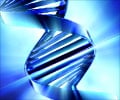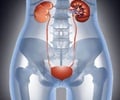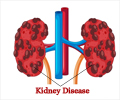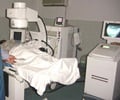Researchers have discovered genetic pathways to curb kidney cancer cells.

Because the VHL gene is inactive in about 90 percent of clear-cell renal cell carcinomas, the most common type of kidney cancer in humans, the study provides a rationale for the evaluation of glycolytic inhibitors in fighting kidney cancer, said Dr. James Brugarolas, assistant professor of internal medicine and developmental biology and the study's senior author.
"It would be expected to kill cancer cells preferentially and spare most normal cells that would still have mitochondrial respiration to rely on," said Dr. Brugarolas.
An estimated 58,000 new cases of kidney cancer were reported in the U.S. in 2010, and 13,040 died of the disease. Based on incidence of this cancer from 2005 to 2007, 1 in 67 people will be diagnosed with cancer of the kidney or renal pelvis during his or her lifetime.
The study also revealed that the effect of VHL loss was mediated by hypoxia-inducible factors (HIF), a family of proteins that binds to specific DNA sequences and responds to decreases in oxygen, known as hypoxia.
"We discovered that simultaneous inactivation of HIF rescued the mice from the effects of VHL inactivation," Dr. Brugarolas said. "To our knowledge, this is the first demonstration in a living organism that simply activating HIF is sufficient to block cells from using oxygen. It also indicates that there are no other pathways that can allow the use of available oxygen when HIF is active."
Advertisement
The gene encodes an enzyme which is important for cells to be able to use oxygen and generate energy, and studies showed that the enzyme was completely inactive in the tumor. The patient, who had an advanced case of cancer, underwent surgery and then standard treatment with mTORC1 inhibitors. After five months, however, her tumor progressed and there were no other proven treatments available. Given this situation, Dr. Brugarolas looked for options to exploit what was known about the tumor. After a discussion with the UT Southwestern Institutional Review Board, the Food and Drug Administration and the drug manufacturer, Dr. Brugarolas managed to secure for his patient a drug in development, 2DG, which previously had been used only in clinical trials.
Advertisement
"We have the tumor growing so that we can test new drugs that may emerge and hopefully help other patients with this rare cancer type," Dr. Brugarolas said. In addition, through analysis of all the mutated genes in the patient's tumor, "we may identify other mutations, which may give us clues about other approaches against this aggressive cancer type."
Efforts of the care team in the National Cancer Institute-designated Harold C. Simmons Cancer Center, "illustrate the type of discovery-based personalized cancer care we strive to provide at UT Southwestern," Dr. Brugarolas said.
Source-Eurekalert















